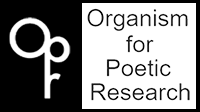The Skin of Space
We want nice skins. We want what pelts us—matter bubbling up or filamenting a flat universe. So: many spaces brushing their skins against one another. What is the skin of an organism that grows what pulls us, are we hooked into it or sliding around on top? A cosmology or poetics (an ontological architecture) that we might want might be an epidermal enterprise, a moving of, folding of, elaborating of skins to make space itself, and make space itself near to us. A material broken down or crushed into fragments, a structure that is fluffed up rather than compact will react with another substance in its vicinity more readily. As the surface unfolds and elaborates itself, part of that elaboration may be a folding back in, a burrowing, a closing-off. This is the landscape, the topography: mountains and valleys, Southwestern canyons with strangely repeated sedimentations like columns holding up what roof—like Redwood-sized stalagmites in an open-air cave, or volcanoes pitted with craters that fold into the earth’s crust, a constant exchange, the movement between Acts. Simultaneity of open and ringed. Space is merely elaborated skin. The celluloid hand-painted work of Stan Brakhage’s films or the scratches of his Chinese Series. The phospholipid bilayer forms because molecules arrange themselves so that all the hydrophobic tails face the inner portion of the membrane, while all the hydrophylic heads arrange themselves along either the surface facing the cell or the surface facing the extracellular environment. Within a bee world signs consist of broken forms, such as stars and crosses, which correspond to the open blossoms upon which the bees alight to gather pollen. At the cliff several or hundreds of feet of laminae of clay minerals pressed: grey and, blue argillaceous shale, sheets of micaceaous, pearly sandstone, and lenticular nodules of iron ore; interstratified with black slate. A spatial arrangement of cells in a tissue—the surfaces and interstices of a histological landscape. Ectoderm, mesoderm and endoderm: folding in and folding out. A continuity that arises within the embryo at the point of gastrulation when a dent or an invagination, which is to become the anus, forms in a spherical hollow ball of cells, and then tunnels through forming the gut and eventually rupturing the other side to form the mouth. We began to imagine a scene at a fabric shop. In it, we remove a spool of satin from the wall. This skin folds in on itself; an endless bracketing, a skin inside our skin, a hypotaxis of space resembling Donne’s paranthetically-driven periods. How to make a forest of Arden without naming any of its parts? At a distance the skin of snow retracts against the green, which in winter is not the green warmed by uneven shadows, but a constant movement between the delineation of trees forming distinct syllables or a brush edge, and a blue that is merely a volume flattened to the horizon, a silhouetted backdrop painted on the surface of the film.
